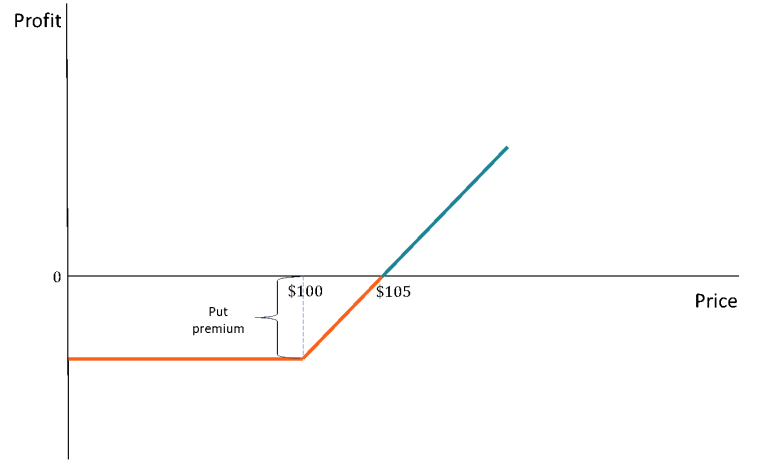Under the frequent rate hike in U.S. stocks this year, many star stocks have also ushered in a sharp stock price correction. "Bottom-hunting" has become the common choice of many investors. "Bottom-hunting" is extremely attractive at this moment of panic. However, many investors are worried about "buying the bottom halfway up the mountain" and are entangled.
Among the option strategies, there happens to be a strategy suitable for the current situation of "bargain hunting:" called Protectvie Put. This strategy can help investors incur limited losses even in the situation of "bargain hunting halfway up the mountain", allowing investors to bargain hunting boldly with confidence. The method is very simple. When buying stocks, buy the corresponding Put option (Put), that is, Long stock + long Put.
Investors typically choose protective put strategies for two different reasons;
1. Limit risk when buying stocks for the first time.
2. Protect previously bought stocks when the short-term forecast is bearish but the long-term forecast is bullish.
Option example:
The investor owns 100 shares of ABC Corp, each worth $100. Investors believe that stock prices will rise in the future. However, investors want to hedge against the risk of unexpected price declines. Therefore, the investor decides to buy a protective put contract with a strike price of $100 (one put contract contains 100 shares). The price of the protective put is $5.
The return on a protective put option depends on the future price of the company's stock. The following scenario is possible:
Scenario 1: The stock price is above $105.
If the share price exceeds $105, the profit can be calculated as the current share price-$105 (including the initial share price plus the put premium). The put option will not be exercised.
Scenario 2: Stock price between $100 and $105.
In this case, the share price will remain unchanged or rise slightly. However, in the best case scenario, investors will still lose money or reach the break-even point. Small losses are caused by the premium that investors pay for the put contract. Similar to the former scenario, the put option is not exercised.
Scenario 3: The stock price is below $100.
In this case, the investor will exercise a protective put option to limit losses. After exercising the put option, the investor will sell 100 shares at $100. Therefore, the investor's loss will be limited to the premium paid for the protective put option, which is only $5.
The Protectvie Put strategy has two main advantages:
1. The upper limit of strategic profit is unlimited and the risk is limited.
For example, in the above option case, investors can get all gains above $105. If the bargain hunting fails, the stock price unfortunately plummets, and the investor's maximum loss per share is only $5.
2. The strategy may not only make money from falling stocks, but also not miss money from rising stocks.
Using the example just now, if the stock temporarily falls to 80 US dollars, the stock will lose 20 US dollars at this time, and the option profit will be 15 US dollars. Taken together, investors will still only lose 5 US dollars. If at this time, investors think that the rebound will be coming, sell put options and only hold the stock, and the stock will rise back in the future. Then investors may not only earn the profits brought by the brief decline of the stock, but also not miss the profits from the rise of the stock.
The Protectvie Put strategy is very simple, but in fact it also has certain shortcomings. Here is a summary of the shortcomings of covered call.
There is a risk of reduced returns. If the stock keeps rising, you will earn relatively less than simply owning the stock because of the extra cost of buying put options. That's the risk of reduced earnings. Although they have made money, many people may feel annoyed because they have made less money.

Comments